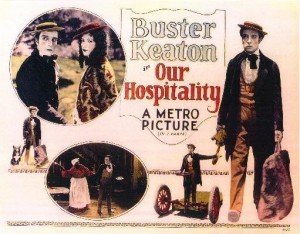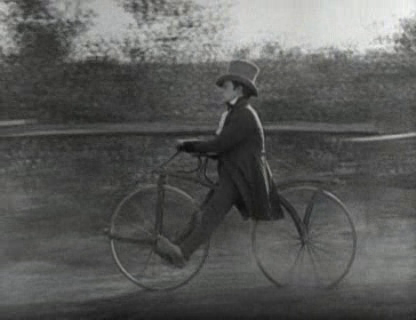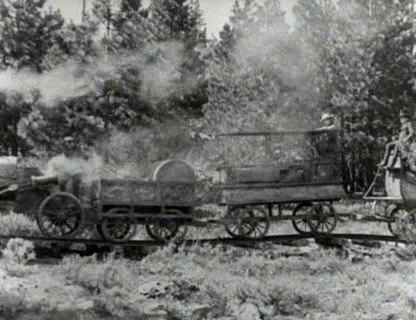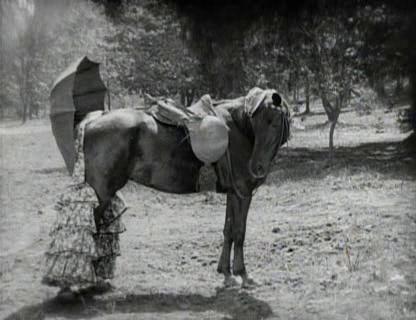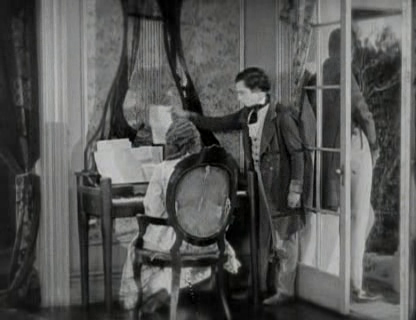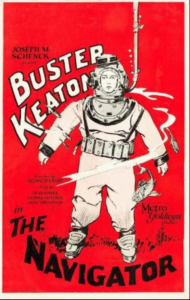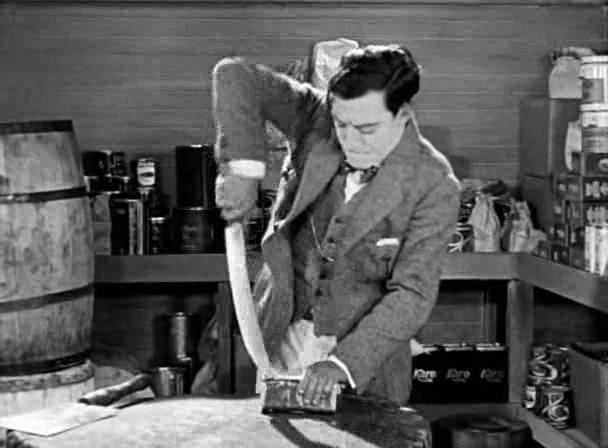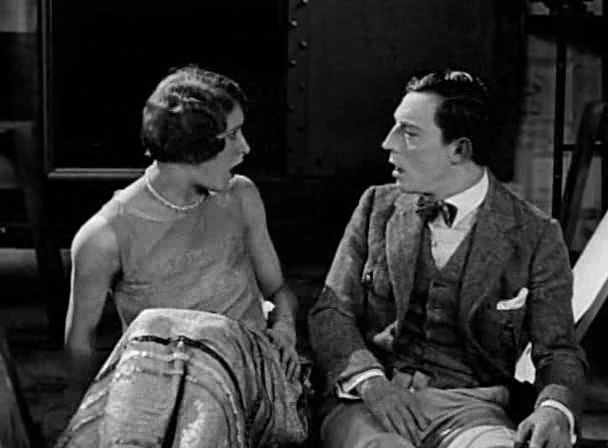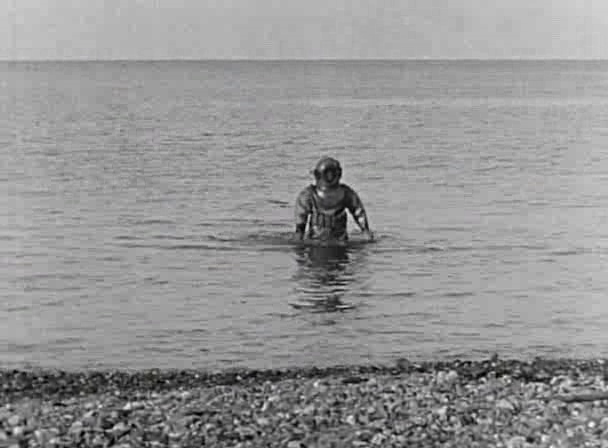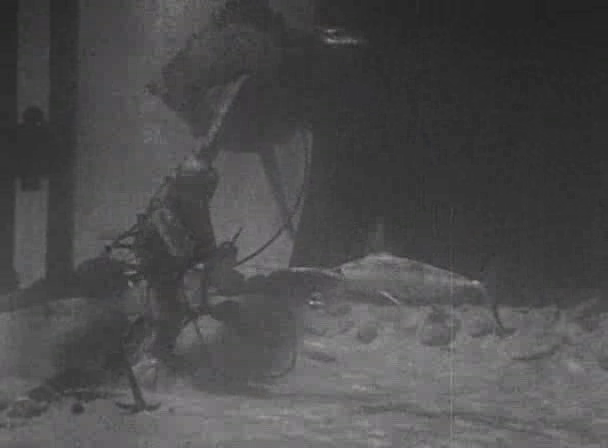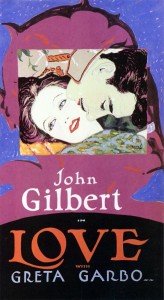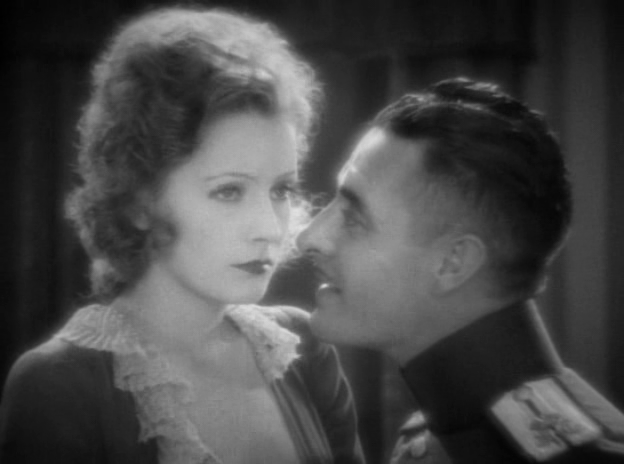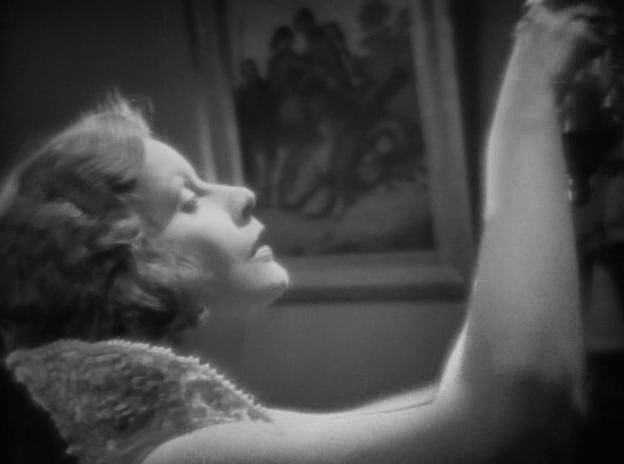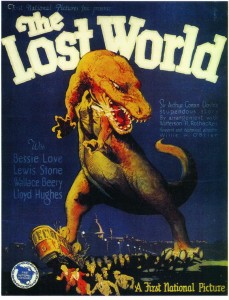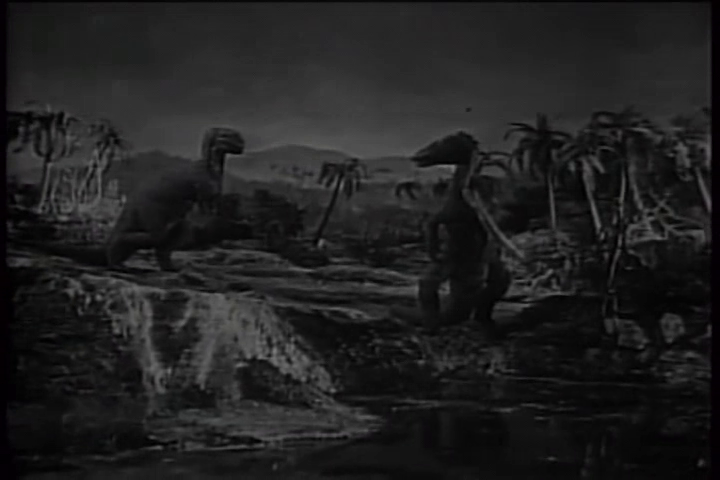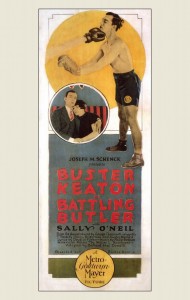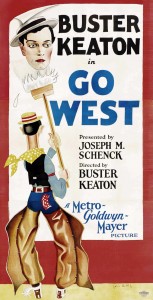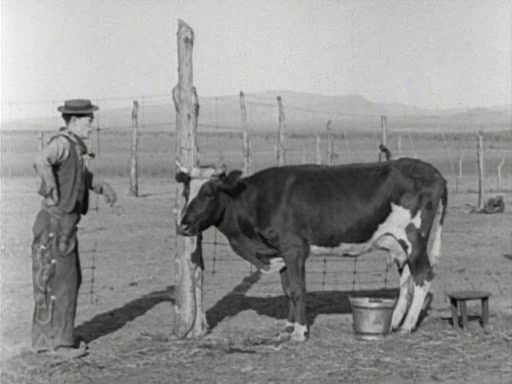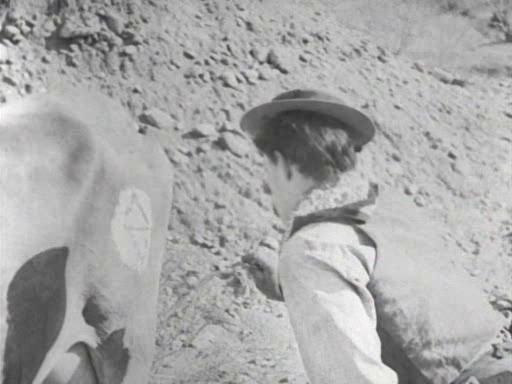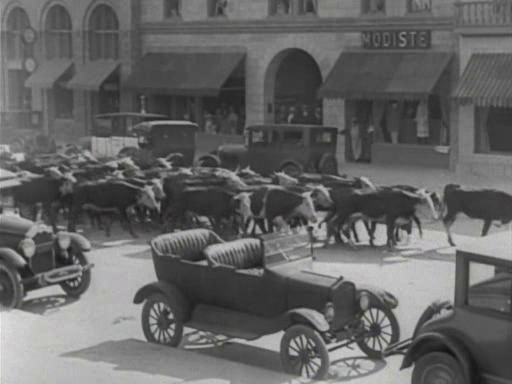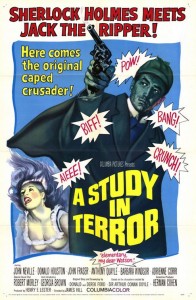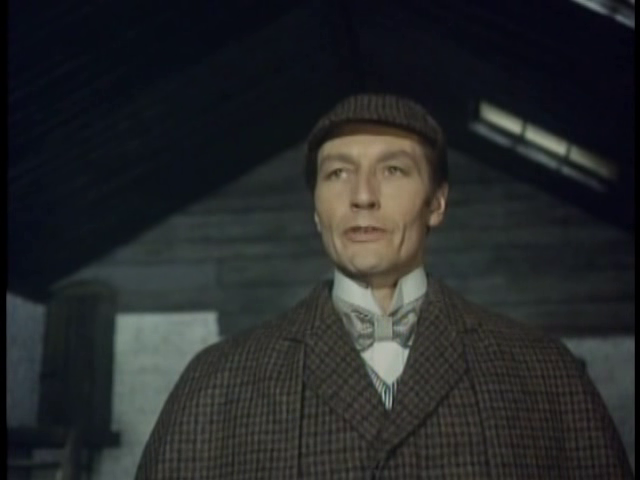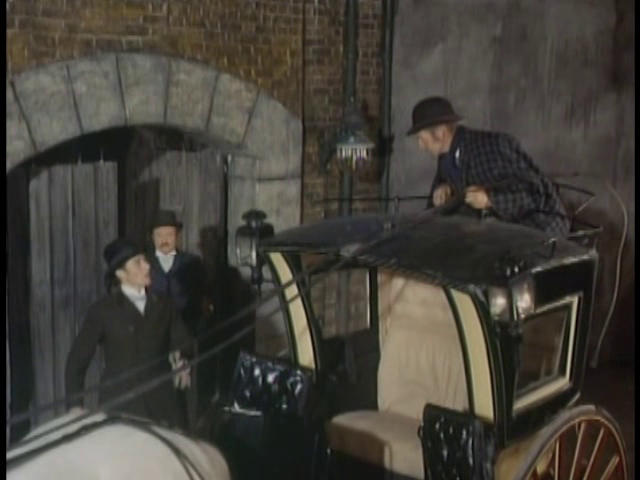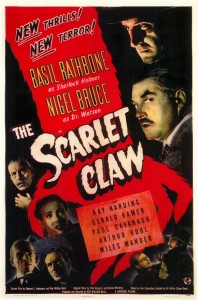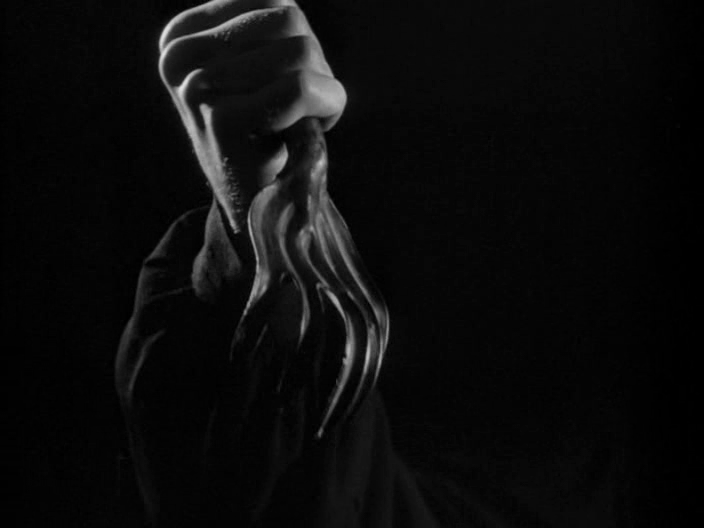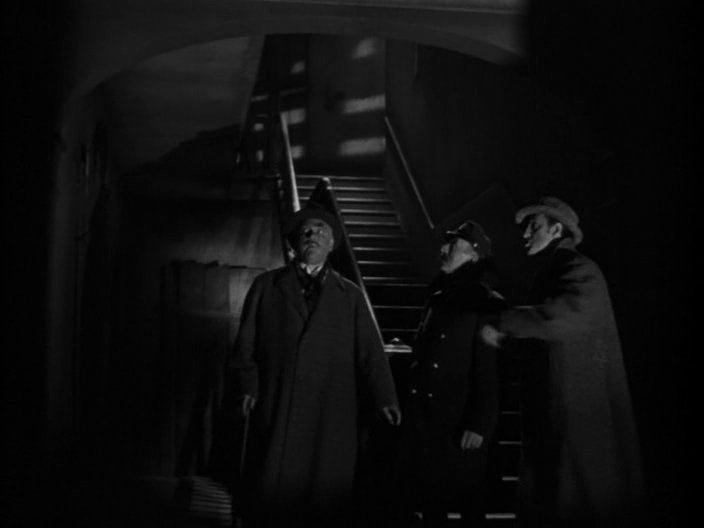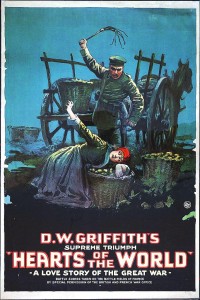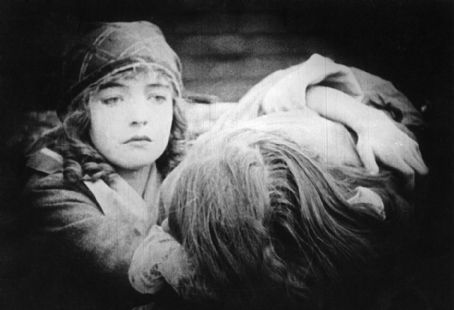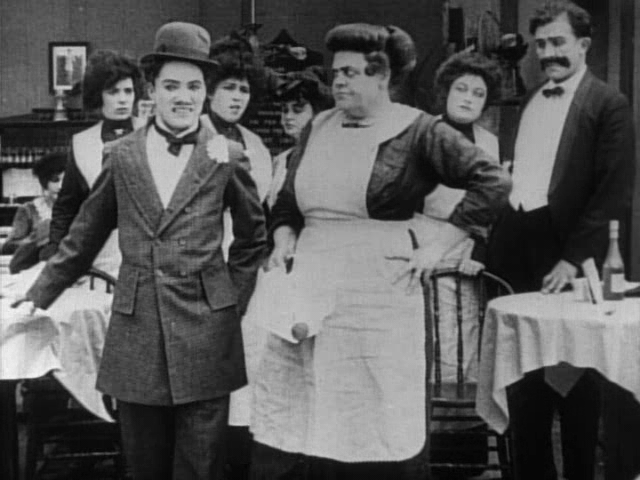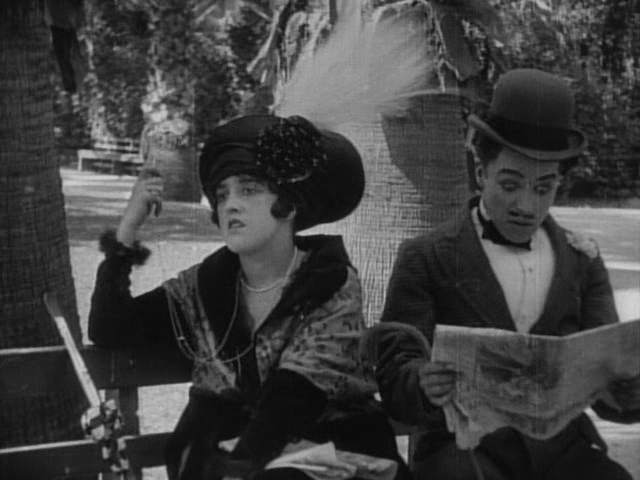|
Genres, Themes, Actors, and Directors:
- Boxing
- Buster Keaton Films
- Comedy
- Mistaken or Hidden Identities
- Play Adaptation
- Silent Films
Review:
Widely considered one of the “least” of Buster Keaton’s films (primarily because it’s based on a play rather than an original cinematic conceit), this nonetheless remains an enjoyable treat for silent comedy fans. Keaton, as always, is at the top of his game, consistently delighting us with one visual gag after the other: Alfred (Keaton) finding no animals available to hunt in a forest literally teeming with critters:
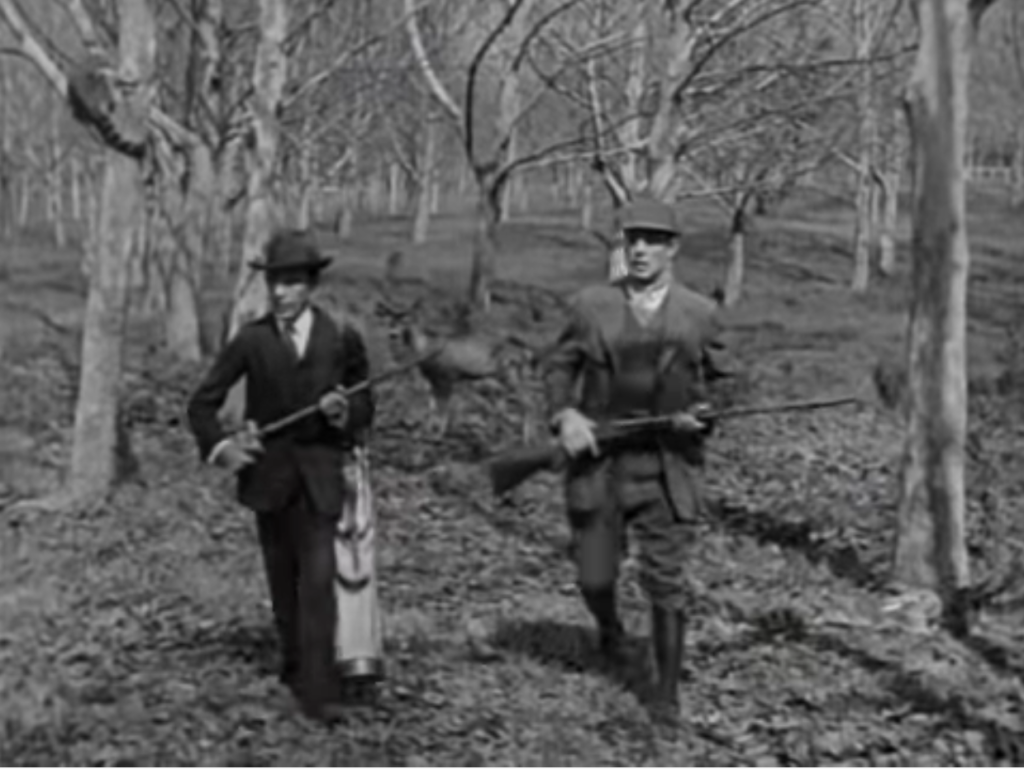
… Alfred’s table sinking in the mud as he romances his new love interest:
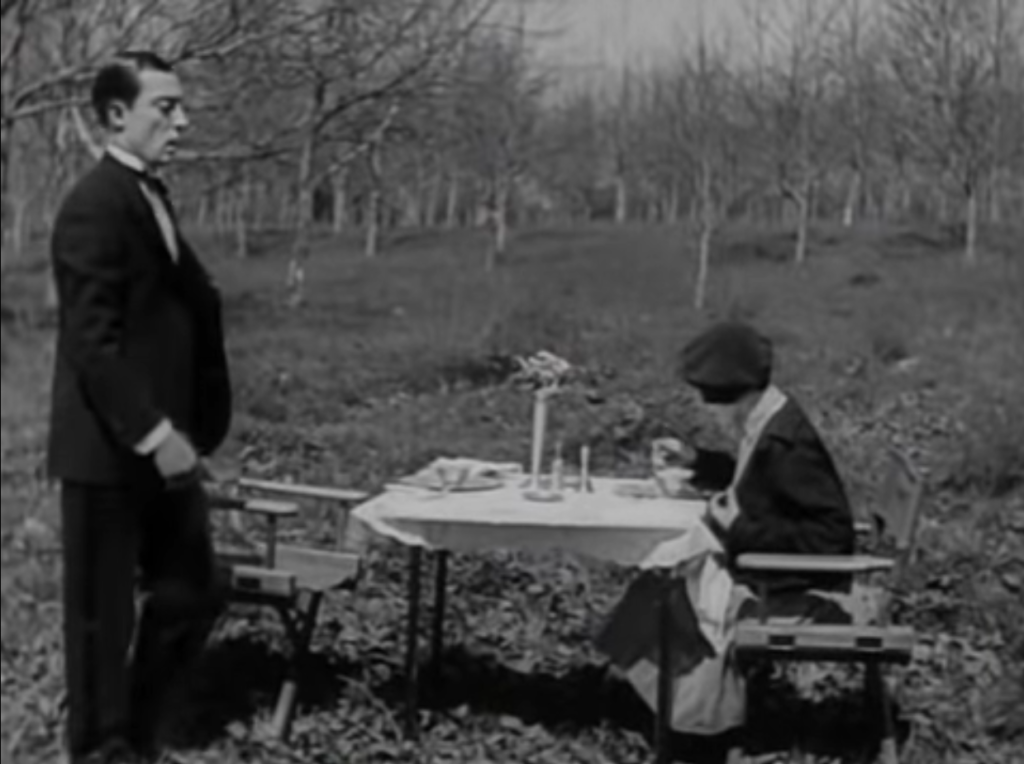
… Alfred’s wild attempts at faux-boxing with a disheartened trainer.
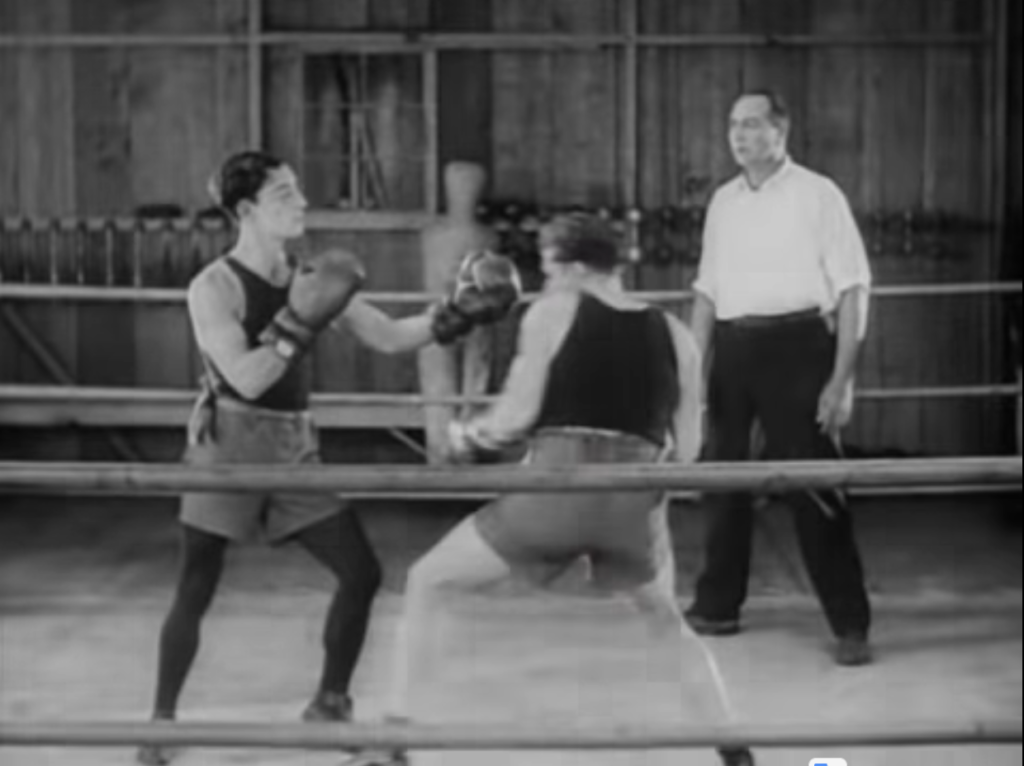
It’s been noted that Keaton was actually too physically dexterous (check out his muscles!) to be convincing as a weakling, but this simply makes his slapstick maneuvers all that much more impressive. Meanwhile, it’s refreshing to note that Keaton’s character originally intends to tell his girl the truth, but literally gets sucked into marriage before he can say a word; his deception thereafter is simply meant to save face in front of the love of his life, and one can’t really fault him for that.
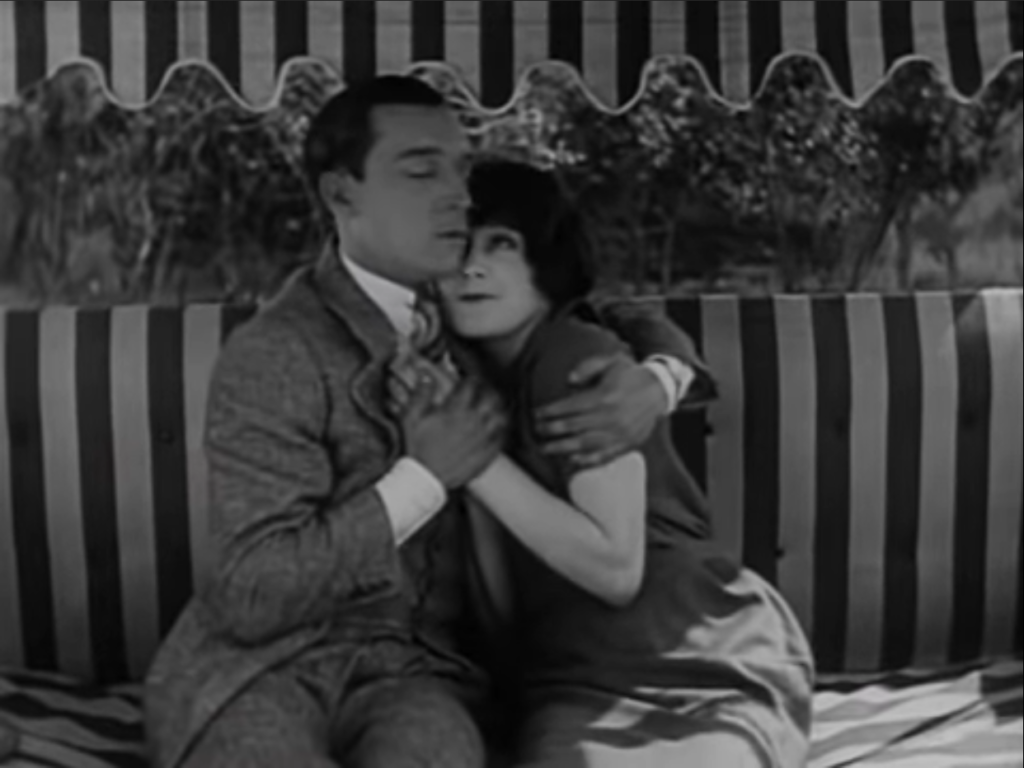
Note: If you decide to check out the original New York Times review, be sure to read all the way to the end, where you’ll find a giggle-worthy final line advertising an accompanying short.
Redeeming Qualities and Moments:
- The amusing opening scenes
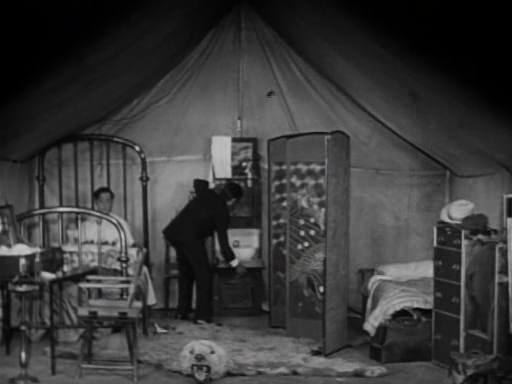
- Some fun visual/physical gags
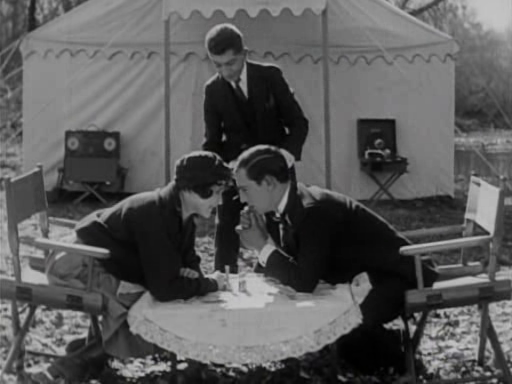
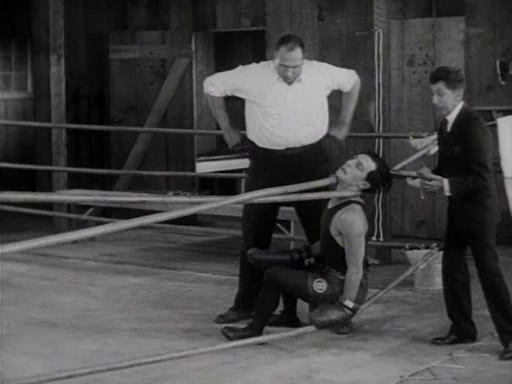
Must See?
No, but like so many of Keaton’s films (even his “lesser” titles), it’s recommended. Listed as a Personal Recommendation in the back of Peary’s book.
Links:
|
